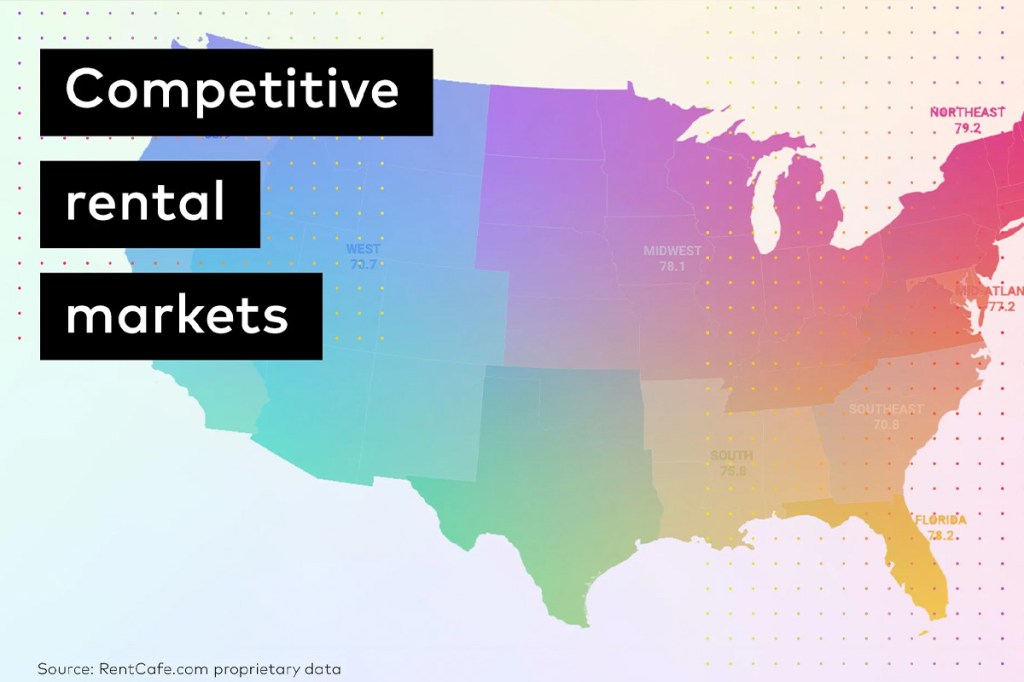
Strategic planning is an investment in the future of your homeowners association. The most successful HOAs have been using strategic plans for decades, and growing communities use them as guideposts to plan their future. So, what goes into a good plan? To find the best answer, we spoke to Jake Gold, director of education at the Community Associations Institute (CAI).
“The biggest challenge is often getting started,” he said, adding, “Many association managers don’t even know they should have a plan.”
Given the importance of strategic planning, this article is going to cover a lot of ground:
- What is strategic planning for HOAs?
- 3 key benefits of a strategic plan
- Mission & vision statements
- When is it time to plan?
- Should you hire a consultant?
- Characteristics of a good strategic plan
- How to involve your homeowners
- The role of community management software
- 5 simple steps to making an effective plan
What is strategic planning for HOAs?
Strategic plans help HOA boards move beyond reactive, day-to-day management to proactive, goal-oriented governance. A good plan typically includes a mission statement, a vision for the future and specific action items to reach the outlined objectives.
According to Jake, “Many HOAs become absorbed in the details of running the community — maintenance, budgeting and enforcing rules — and fail to think ahead. A strong strategic plan can transform a community from simply functioning to thriving.”
Strategic planning fosters a shared vision and sense of purpose among residents and leaders. In the best plans, everyone understands the community’s long-term goals, such as improving amenities, building stronger social ties or becoming more sustainable.
Without a strategic plan, a community may find itself veering off course due to shifting priorities and lack of cohesion. Ultimately, says Jake, this limits the association’s potential.
4 key benefits of a strategic plan
A well-crafted strategic plan brings numerous benefits to an HOA. It lets you showcase the HOA’s identity, align community goals, improve governance and use the plan as a marketing tool for the community.
1. Market your HOA’s identity
Show potential homebuyers exactly what type of community they are stepping into. Whether you’re cultivating an active adult neighborhood with bustling social activities or a community focused on green spaces, a strategic plan will showcase what makes your HOA unique. When people can see the results of a plan, it’s easier for people to make homebuying decisions.
According to Jake, “By establishing the community’s strengths and long-term vision, the board can highlight aspects that appeal to prospective homebuyers.” Of course, this requires a strategic plan that visibly aligns with the community’s stated identity.
2. Align community goals
Beyond shaping identity, a strategic plan aligns all community decisions with overarching goals, ensuring consistency and focus. Without a plan, community board members often work against one another. A plan ensures board members, committees and residents are all working toward shared goals and not pulling in different directions.
3. Improve governance
When goals and priorities are aligned, you can govern efficiently. Resources such as funds, time and energy are allocated more effectively. This focus not only enhances the current living experience but also makes the community more attractive to future residents.
Mission & vision statements
Many businesses have mission and vision statements. An HOA is no different. These terms are sometimes used interchangeably or mentioned together, but they play different roles in guiding a community’s development and focus.
Mission statement
A mission statement defines your community’s purpose in the present. It addresses what the community stands for and outlines its core values and principles. It sets goals to ensure all stakeholders understand what’s driving the association’s decisions.
Vision statement
A vision statement focuses on the future. It has a destination in mind and describes where the community aspires to be in the coming years. It sets the direction for long-term growth and development, serving as an aspirational guide. A well-crafted vision paints a picture of success, motivating residents and board members to work toward a shared dream.
Together, the mission and vision statements provide direction and inspiration, ensuring that all decisions align with broader objectives.
When is it time to plan?
Strategic planning is not a one-and-done thing. For an HOA to remain relevant and effective, its strategic plan needs to be looked at periodically to ensure it still aligns with the community’s evolving needs.
“A good rule of thumb is to re-evaluate the plan every three to five years,” said Jake. During this time, demographic shifts or changes in the community — such as an influx of young families or an aging population — can significantly affect priorities.
In some cases, annual reviews can be used to keep plans dynamic. These reviews serve as checkpoints to assess progress, adjust goals and address emerging challenges.
Unscheduled changes to the plan
Not everything is going to operate on schedule. For instance, if the board is constantly reacting to issues instead of proactively addressing community goals, the strategic plan may need to be revisited. Without a clear plan, board members’ individual priorities can drive decisions, leading to inconsistency. A strategic plan keeps everyone on the same page.
Let’s say you don’t have a very engaged community to begin with. It’s not a hopeless situation. It’s just another sign that your plan needs to be looked at — or you need a plan!
Often, when residents are disengaged, it means that the community’s direction is not clearly communicated or that decisions are not aligned with residents’ interests.
Should you hire a consultant for strategic planning?
For many HOAs, strategic planning can seem like a daunting task. Board members may not have experience in long-term planning. In such cases, you may want to hire a consultant. Consultants bring expertise and an outsider’s perspective, helping boards focus discussions and avoid common pitfalls.
According to Jake, a third-party consultant can make a big difference: “Consultants often guide boards through the entire process, from developing a vision to setting actionable goals.” By having an experienced professional facilitate the planning process, HOAs can develop a strategic plan that reflects the community’s unique needs and benefits from best practices in community management.
Where to find help
Local CAI chapters are an excellent resource. Many CAI instructors who teach strategic planning are also available for consulting. They offer practical knowledge and industry-specific insights while helping HOAs get core elements of the plan in place.
A focused session, often lasting just a day or an afternoon, can lay the foundation for a strategic plan.
Characteristics of a good strategic plan
A well-crafted strategic plan is a powerful tool for guiding decision-making and ensuring alignment. A poorly designed plan can create confusion, foster division and wind up being ineffective.
According to Jake, one of the biggest differences between a good and bad plan comes down to community participation. He told us, “A good plan is one that reflects the collective input of homeowners, not just the opinions of a few board members.” Involving residents, committees and other stakeholders ensures the plan finds common ground among everyone.
“Measurable goals are crucial,” Jake emphasized. Without clear benchmarks for success, it’s difficult to gauge progress or adjust strategies effectively. A vague or overly ambitious plan is challenging to implement and track.
How to keep a good plan from going bad
There’s no faster way to turn a good plan into a bad one than by lack of follow-through. Ideas that are laid out but not acted upon are destined to fail. Inaction leads to frustration, which hurts participation and buy-in.
Homeowners buy in when they understand and believe in what you’re doing. It’s obvious when your strategic plan means something to the community because people will stay active in its implementation. So, share the plan, seek feedback and be transparent about its progress.
How to involve your homeowners in strategic planning
According to Jake, HOA managers should be looking to include a diversity of opinions and perspectives. “The board of directors is ultimately responsible for steering the community, but engaging residents and committees in the planning process is crucial for a better outcome,” he said. When residents feel that their voices are heard, they feel a sense of ownership. This makes it more likely that they will rally behind the plan.
Establish committees
Committees play an essential role in strategic planning. Once a plan is established, committees can be tasked with specific activities that align with broader goals. For example, a landscape committee might focus on enhancing green spaces. No two communities are alike; therefore, no two committees are alike. Allow the unique passions, expertise and creativity of your people to shine.
Surveys, meetings and workshops help gather input about residents’ priorities and desired changes. The more input you have and the more transparent you are, the stronger the plan will be.
The role of community management software in strategic planning
By centralizing information and operations, community management software helps align all members with the community’s vision and goals.
“Technology has a huge potential to make strategic planning easier for communities,” said Jake. The right software can integrate the strategic plan into daily operations, ensuring that it doesn’t become just another document buried under paperwork.
Here’s an easy way to integrate your plan and your technology.
All-in-one association management software like Yardi Breeze Premier integrates community accounting, budgeting & reporting, homeowner services and association management tools into one platform. Now you’re linking daily tasks with long-term goals, and HOA software can be used to streamline plan execution. The board can track goals in real time, and everyone wins.
This is the most cost-effective way to keep your strategic plan organized and on track.
Final breakdown: 5 simple steps to making an effective plan
Let’s recap. Developing a strategic plan for an HOA means transforming a community’s long-term vision into actionable goals. In most plans, you’ll complete the following five steps:
- Create mission and vision statements
- Engage stakeholders
- Identify clear, specific goals for the community
- Develop an action plan to achieve your goals
- Share the plan with the entire community
Keep in mind that every plan is different and might not require all these steps in this order. Still, this is a good place to start if you’re new to strategic planning.



